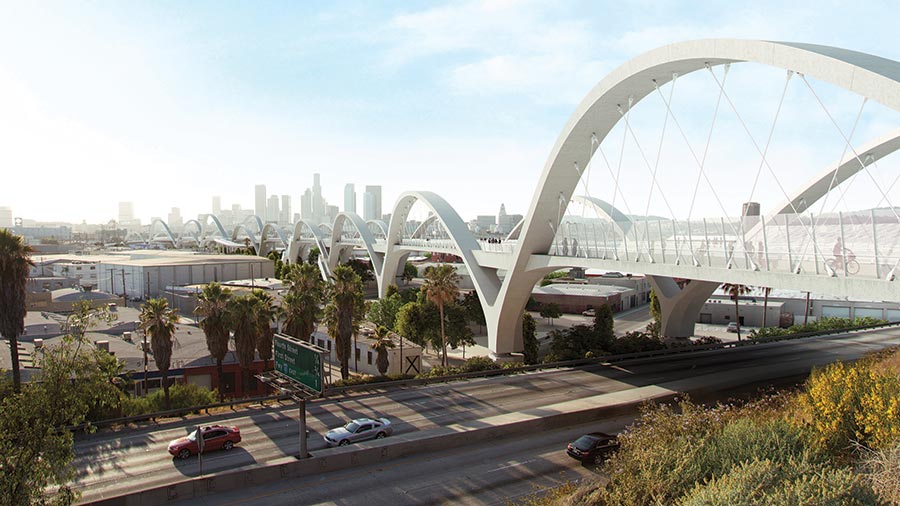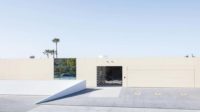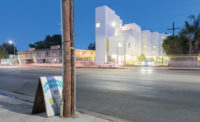You may not know its name, but you’ve definitely seen Los Angeles’ original Sixth Street Viaduct. Built in 1932 to span the L.A. River, railroad tracks, and local roads, the 3,500-foot-long Art Deco structure— the longest of 14 historic bridges that cross the river—has appeared in dozens of films, TV shows, and commercials. After a seismic study in 2004, engineers concluded that it had to be torn down because its concrete supports were deteriorating from within. Preservationists fought to maintain the icon, but in 2016, it was demolished. Nevertheless, thanks in large part to their efforts, in 2012 the city’s Bureau of Engineering held its first-ever international design competition to replace it. The selected scheme, “The Ribbon of Light,” will be the largest bridge project in L.A.’s history at nearly $500 million, which will be funded primarily by federal and state transportation sources. Local architect Michael Maltzan, who won the competition with engineering and architecture firm HNTB, hopes the new bridge will transform the city and the idea of infrastructure itself.
The new span will feature 10 pairs of ribbonlike concrete arches, a nod to the old one’s twin pairs of steel arches. When finished in 2020, it will reconnect two neighborhoods vastly different from each other: Boyle Heights to the east, once a Jewish enclave and now largely a working-class Mexican-American neighborhood, and the Arts District to the west, a former industrial zone that’s rapidly morphing into a mixeduse community of lofts, condos, and creative businesses.
Though it will still carry cars, of course, the new viaduct will also feature pedestrian and bike lanes, linked via staircases and ramps to new parks and public spaces below the road deck. These amenities are still taking shape, but there’s been unease about potential gentrification, particularly among Boyle Heights residents. The city and design team have been holding regular community meetings throughout the project.
“The concerns of these residents also exist in other parts of L.A. as the pressure to build more housing and reduce traffic ripples through areas that had been relatively unchanged for years,” says Maltzan. Nonetheless, he believes the viaduct will—and should—improve life. “From the very beginning, there was broad stakeholder consensus that this bridge should do more than move vehicles,” he says. “L.A. is changing. The river is becoming accessible. People want to walk and bike instead of driving. They want green spaces. So the viaduct must enable this future and connect these neighborhoods in a deeper, more meaningful way.”




